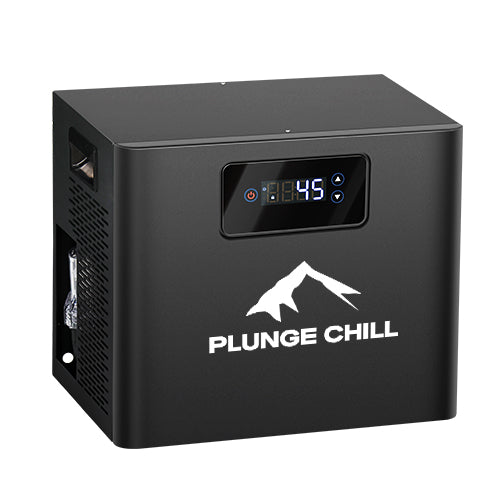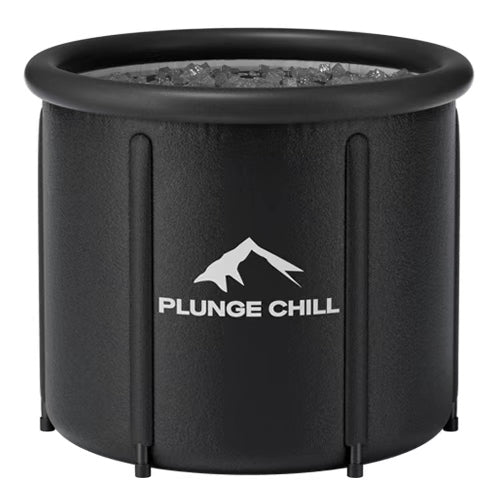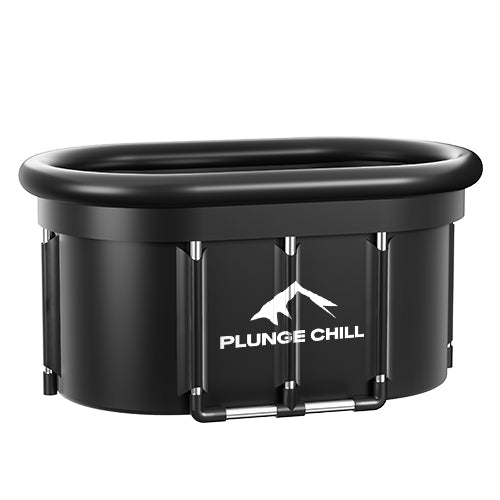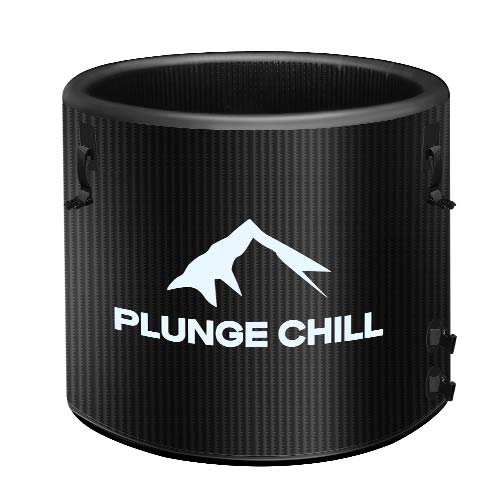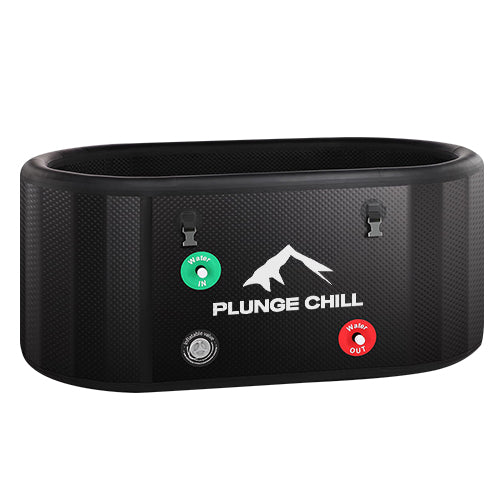Cold immersion is one of the simplest tools I use to manage soreness, improve perceived recovery, and keep athletes on the field. The catch is that water is a living system, and cold alone does not keep it clean. After installing and maintaining filtered cold plunge tubs in club rooms and home gyms, I’ve learned that the difference between a revitalizing recovery and a questionable dunk is almost always water quality. This guide explains what “filtered” really means, how to keep water pure without turning your tub into a full‑time job, and how to choose equipment that fits your goals and your schedule.
My perspective is practical and performance‑driven, but the standards come from pool operations and manufacturer guidance. I’ll cite the source when it matters, avoid hype, and flag inferences where I’m extrapolating from the available notes.
What a Filtered Cold Plunge Tub Actually Is
A filtered cold plunge tub is a compact immersion system that continuously circulates water through a pump, mechanical filter, and often a chiller. Many models add secondary disinfection such as UV or ozone. The aim is straightforward: remove particulates, disable or kill microbes, and keep chemistry stable so the water stays clear, safe, and skin‑friendly day after day.
Non‑filtered ice pods are essentially still water vessels. They can be great for occasional use, but without circulation and filtration they accumulate organic material faster, develop surface films, and depend entirely on manual water changes and sanitizers. The difference becomes obvious in team settings or households that plunge daily; filtered systems simply hold clarity longer with fewer full drains when maintained correctly.
In my installs, the most reliable setups pair a properly sized pump with a cartridge or media filter, a chiller capable of maintaining the target temperature under load, and a secondary system such as UV or ozone to reduce chemical demand. The equipment doesn’t make care optional—it makes care effective.

How Cold Changes the Rules of Water Care
Cold water slows chemistry and changes how disinfectants behave. According to CPO Class training guidance, chemical reactions proceed more slowly as water gets colder and chlorine efficacy can drop, which means you need diligent testing and adjustments even if the water looks pristine. The same source recommends hydrodynamics that eliminate “dead zones,” because circulation distributes sanitizers evenly and sweeps debris to the filter where it can be removed.
One nuance that is often missed is that algae can still grow in cold water around 50°F, so temperature alone does not prevent biological growth. This is why a multi‑layer approach—mechanical filtration, a primary sanitizer such as chlorine, and possibly UV or ozone—matters even when the water feels near icy. Another critical nuance is that temperature influences the Langelier Saturation Index (LSI), a predictor of whether water will precipitate scale or corrode surfaces. In chilled systems, ignoring temperature in LSI calculations can cause scale inside the chiller or corrosive water that shortens equipment life. The practical takeaway is to control pH, alkalinity, and hardness with the cold in mind instead of using hot‑tub rules.

Target Chemistry for Clarity and Safety
These target ranges come from professional plunge and pool maintenance guidance summarized by CPO Class. They are the backbone of clear, comfortable water in cold environments.
Parameter |
Target Range |
Rationale |
pH |
7.2–7.8 |
Keeps sanitizer effective and gentle on skin; prevents corrosion and scale when balanced with alkalinity and hardness. |
Total alkalinity |
80–120 ppm |
Buffers pH to minimize swings from dosing or bather load. |
Calcium hardness |
200–400 ppm |
Limits corrosivity and scale formation, especially important inside chillers. |
Free chlorine |
1.0–3.0 ppm |
Maintains disinfection; test frequently because cold slows reaction rates. |
Total dissolved solids (TDS) |
Less than 1,500 ppm |
High TDS can cloud water and reduce sanitizer effectiveness; partial drains help control this. |
I recommend daily quick checks for pH and sanitizer before high‑traffic periods, and a fuller weekly panel that includes alkalinity and hardness. CPO Class also emphasizes calibrating pH and ORP meters regularly and keeping written logs so you can spot trends and correct small drifts before they become big problems.
Circulation, Filtration, and Turnover
Clean water requires more than the right chemistry; it depends on how fast the system moves and filters the water. Even with cold water, circulation distributes sanitizer and keeps debris heading toward the filter instead of settling into corners.
System Type |
Suggested Turnover |
Notes |
Commercial plunge |
About 30 minutes |
Sized for high bather load; adjust to volume and demand. |
Residential/home plunge |
Up to 1 hour |
Adequate for most home use; increase frequency if water clouds or load is high. |
These figures come from professional guidance outlined in CPO Class training. In practice, for small tubs I aim for complete turnover close to the one‑hour mark, then adjust based on clarity, measured sanitizer levels, and how often the tub is used. If a tub serves multiple athletes back‑to‑back, I increase circulation time between sets and after the last user to ensure the filter has time to remove suspended material.
An overlooked operational insight is how “dead zones” undermine even good turnover. Return jets and suction points that short‑circuit flow leave corners untreated. I verify flow by dropping a small amount of food‑safe dye and watching the movement. If any area stagnates, I reposition returns or add directional fittings to sweep those corners. This simple check pays dividends in reduced film on walls and more stable chlorine readings.
Maintenance Routines That Keep Water Pure
The simplest habits are the most impactful. Alphasauna emphasizes a pre‑rinse or quick shower, especially feet, underarms, and back, to minimize sweat and oils entering the water. It also recommends covering the tub immediately after use—indoor or outdoor—to block dust and debris. In my environments, a pre‑plunge rinse and a cover used every single time extend the life of the water more than any other single tactic.
After each session, I run the circulation and filtration for a period to remove suspended impurities, a practice Alphasauna also recommends. I sanitize the water according to manufacturer directions and check that pH remains in range. As Chill Tubs highlights, choose sanitizers designed for cold‑plunge systems and avoid products not intended for this use. Between uses, quick wipe‑downs of the waterline prevent surface scum from hardening. Periodic deeper cleans are straightforward: drain, wipe with warm water plus a mild detergent or vinegar, rinse thoroughly, and refill with fresh water before rebalancing and sanitizing. Chill Tubs suggests doing these simple routines every couple of weeks, with a more substantial detergent fill and soak every few months if needed.
Filters work best when they are not overloaded with sludge. CPO Class recommends cleaning or backwashing filters on a regular cadence and replacing filter media per manufacturer guidance. I find that keeping a spare cartridge on hand makes it easy to swap immediately when flow drops, then clean the dirty cartridge without rushing.
Chillers deserve attention too. Per CPO Class, coils should be kept clean, refrigerant verified by a qualified technician, and leaks checked and repaired. In practical terms, keeping dust off the chiller’s intake and exhaust and maintaining clear airflow improves performance and reduces run time.

Reconciling Different Water‑Change Schedules
Guidance on when to change water varies. Alphasauna recommends changing water every five to seven days or after about eight to twelve uses for home scenarios. Chill Tubs suggests that basic ice pods with still water need changes roughly every three to four days, while more advanced chilled models with built‑in filtration can often go about two weeks between changes.
These differences are not contradictions so much as different assumptions. Still water versus filtered and chilled water is the first variable. Bather load, indoor versus outdoor placement, and the thoroughness of pre‑use rinsing also matter. Timeframe and methodology likely differ as well: a brand’s recommendation may be tuned to its typical user base or to conservative, low‑risk practices. In my experience, filtered tubs that run circulation after use and maintain sanitizer at 1.0–3.0 ppm stay clear and odor‑free longer than still water setups under otherwise similar conditions. When in doubt, let clarity, odor, and measured chemistry guide you, and err on the side of a fresh fill if readings become unstable.

Chemicals and Secondary Disinfection in the Cold
Primary sanitizers and pH control remain essential in cold water. Alphasauna notes that chlorinated disinfectants and pH balancers help keep water in good condition and cautions against overdosing because skin irritation is a real risk. It also offers a rule of thumb for chlorine tablets of about one tablet per 1,000 liters, which is roughly one tablet per 264 gallons. Because tablet types vary in strength and composition, I treat this as a starting point and rely on testing to confirm free chlorine in the 1.0–3.0 ppm range suggested by CPO Class.
Confidence: Low. Verify the tablet’s active ingredient and strength on its label, then test free chlorine 10–15 minutes after dissolving with a reliable kit to confirm the dose achieves 1.0–3.0 ppm.
Cold water slows sanitizer reactions, so test more often than you think you need to—especially after high use. CPO Class recommends weekly enzymes to help digest oils and lotions that contribute to scum and films, phosphate removers to keep algae in check, and routine stain/scale preventatives to protect surfaces and metals. Secondary systems like UV and ozone are excellent partners in cold plunge tubs because they reduce organic load and inactivate microbes without raising TDS. They are not substitutes for a primary sanitizer, but they lower the burden and help the water hold clarity between changes.
Filtered Versus Basic Ice Pods: Practical Differences
Here is a concise comparison rooted in the research notes and day‑to‑day use.
Aspect |
Basic Ice Pod (Still Water) |
Filtered Cold Plunge (Circulating) |
Water movement |
Immobile; no filtration |
Continuous circulation through a filter; optional UV/ozone |
Sanitation approach |
Manual dosing only |
Dosing plus mechanical removal; secondary disinfection often included |
Typical water‑change cadence |
About every 3–4 days in practice |
About two weeks in advanced chilled models when maintained |
Hygiene resilience |
Sensitive to bather load; surface scum forms faster |
More durable between changes when chemistry and filters are maintained |
The cadence values are drawn from Chill Tubs and should be adapted to your use and measurement. Alphasauna’s guidance of five to seven days or eight to twelve uses for home setups sits between these poles and is consistent with what I see when pre‑rinses are inconsistent or outdoor debris is an issue.
Buying a Filtered Cold Plunge You Can Keep Clean
A tub you can maintain easily is the tub you will use consistently. The following considerations come from the operational guidance above, along with practical needs in gyms and training rooms.
Prioritize a pump and filter that can turn over the full tub volume within about an hour for home use, aligning with CPO Class’s residential guidance. Look for systems that clearly state turnover, not just pump horsepower, and that provide easy access to the filter so you can clean or swap media without tools. UV or ozone integration reduces chemical demand and helps keep water bright and odor‑free between changes, which is particularly valuable when multiple family members plunge daily.
Serviceability matters. CPO Class recommends servicing chillers, including cleaning coils and verifying refrigerant. Choose a unit that allows basic coil access and has unobstructed airflow to maintain performance. Covers are not optional; make sure the one supplied is easy to use so it goes on after every session. Small add‑ons like a foot‑rinse station near the tub reduce organic load significantly and are standard in professional settings for good reason.
One inference I make in product selection is to prefer cartridge filters with replaceable media rather than only mesh strainers because they remove finer particulates and are easier to swap when flow drops. Check the manufacturer’s spec sheet for the type of filtration and available replacement media, then confirm that the filter can be accessed and replaced without disassembling the tub.
Another inference is to ask vendors how they address temperature’s effect on scaling in the chiller, whether through material choice or recommended chemical controls, because low‑temperature operation shifts LSI. Request a maintenance bulletin or talk to the vendor’s technical support to confirm recommended calcium hardness and any scale‑control measures in chilled operation.

Care, Cleaning, and Troubleshooting: A Working Routine
Here is the cadence I use to keep water pure across busy weeks, aligned with the sources cited.
Before use, I ask athletes to rinse quickly. This single step, emphasized by Alphasauna and Chill Tubs, reduces oils and sweat that fuel bacterial growth. Between sessions, I keep the cover on unless someone is actively plunging, which slows dust and debris. After the last session each day, I run circulation and filtration for a period so the filter removes suspended material and the sanitizer redistributes.
Daily, I test pH and free chlorine and correct to the ranges summarized from CPO Class. If the water line shows a film, I wipe it before it hardens. Weekly, I test alkalinity and calcium hardness, adjust to keep the LSI balanced for cold water, add enzymes per label, and clean the filter or swap cartridges. Every couple of weeks, I do a simple clean cycle: drain, wipe with warm water and a mild detergent or vinegar, rinse thoroughly, refill, rebalance, and sanitize. Every few months, I inspect fittings and seals for signs of wear and have the chiller serviced, following CPO Class’s recommendations to clean coils and check refrigerant and for leaks.
If water clouds despite correct sanitizer levels, I check flow and the filter first. A clogged filter reduces capture and distribution. If sanitizer drifts quickly, I review bather hygiene, confirm dosing, and test source water for pH and hardness to ensure I’m not fighting an upstream issue. If scaling appears inside fittings, I re‑check calcium hardness and pH and adjust within the target ranges to move the LSI back to balanced for the colder temperature.
Safety and Hygiene Notes That Matter
CPO Class underscores that controlling biofilm protects against pathogens such as Legionella. For home setups, that means staying within sanitizer targets, scrubbing surfaces before films establish, and keeping the area ventilated to manage condensation and humidity around equipment. Chill Tubs also highlights using sanitizers designed for ice baths; products that are fine for hot tubs or pools may not be appropriate in cold plunge systems, especially in smaller volumes where dosing missteps are magnified.
A brief overlooked insight is that TDS quietly accumulates as you add chemicals. Even if the water looks clear, TDS over time can reduce sanitizer efficacy and contribute to a dull look. The simplest fix is a partial drain and refill to bring TDS back down, aligned with CPO Class’s recommendation to use partial drains to reduce excess hardness and dissolved solids. This is also why restraint in dosing, paired with real testing, beats “just in case” chemical additions.

Takeaway
Clean, safe cold water requires a system and a routine. Filtration, circulation, and balanced chemistry do the heavy lifting; pre‑rinse habits and a cover extend the life of your water; and clear testing targets keep you honest. Alphasauna’s hygiene tips, Chill Tubs’ practical cleaning cadence, and CPO Class’s chemistry and circulation benchmarks agree on the fundamentals even where timelines differ. If you size your pump and filter to turn the tub over about every hour, keep free chlorine near 1.0–3.0 ppm with pH 7.2–7.8, and remove surface films before they set, you will spend more time recovering and less time wrestling with water.
FAQ
What does “filtered” get me that a basic ice pod does not? A filtered tub circulates water through a mechanical filter and often adds UV or ozone. This physically removes debris and supports your sanitizer, so the water stays clear and stable longer than still water in a basic ice pod. The difference is most noticeable with daily use.
Do I still need chemicals if I have a great filter and a UV/ozone unit? Yes. Mechanical filters and UV/ozone reduce load, but you still need a primary sanitizer. CPO Class guidance supports maintaining free chlorine at 1.0–3.0 ppm with pH in the 7.2–7.8 range, even in cold water.
How often should I change the water in a filtered cold plunge? It depends on use, but we have guideposts. Alphasauna suggests changing every five to seven days or after about eight to twelve uses in home scenarios. Chill Tubs notes about three to four days for basic ice pods and about two weeks for advanced chilled models with built‑in filtration. Let measured chemistry, clarity, and odor be your final judge and change sooner if readings drift.
Is cold water naturally clean enough to skip sanitizer? No. CPO Class notes that cold slows chemical reactions and chlorine efficacy, and algae can still grow near 50°F. Cold helps, but it does not sterilize the water. Filtration and disinfectants are still required.
Can I follow pool or hot‑tub rules for my cold plunge? Borrow the targets, not the dosing cadence. The chemistry ranges from CPO Class apply well, but cold water changes reaction rates and scale risk. Test more frequently, adjust carefully, and consider temperature in your LSI balance to protect your chiller and surfaces.
What’s a reasonable starting dose for chlorine tablets? Alphasauna cites roughly one tablet per 1,000 liters, around one tablet per 264 gallons, as a general reference. Because tablet potency varies, treat this as a starting point and verify with testing that free chlorine lands between 1.0–3.0 ppm. Check the tablet label and confirm with a test kit 10–15 minutes after dosing.

References
- https://www.law.cornell.edu/regulations/nebraska/178-Neb-Admin-Code-ch-2-SS-005
- https://health.osu.edu/wellness/exercise-and-nutrition/do-ice-baths-help-workout-recovery
- https://pressbooks.cuny.edu/vision/part/why-cold-plunge-pumps-matter-in-ice-baths/
- https://wellness.studentaffairs.miami.edu/_assets/pdf/policies-and-procedures/policies-procedures.pdf
- https://www.canr.msu.edu/ipm/uploads/files/trainingmanuals_swimmingpool/swimmingpool_wholemanual.pdf
- https://uwf.edu/media/university-of-west-florida/academic-engagement-and-student-affairs/departments/recreation/archive-/LG_PM_digital.pdf
- https://www.garagegymreviews.com/cold-plunge-maintenance
- https://alphasauna.com/cold-plunge-tub-with-chiller/
- https://chilltubs.com/how-to-keep-ice-bath-water-clean/
- https://cpoclass.com/cold-plunge-pool-maintenance/
